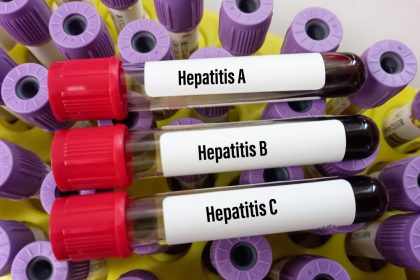The clinical paperwork and brief recovery instructions you receive after a pregnancy loss often cover just a fraction of what your body and mind will experience in the days, weeks, and months that follow. Whether you’ve undergone a miscarriage or an abortion, the rushed nature of modern healthcare means many women leave medical offices with significant knowledge gaps about what to expect during recovery.
This information vacuum isn’t typically due to malicious withholding but rather to systemic issues—providers with limited appointment times, varying comfort levels discussing sensitive topics, and the fact that medical training often emphasizes physical recovery over emotional and hormonal aspects. The result? Many women navigate the aftermath feeling unprepared for the complex physical and emotional experiences that follow.
Let’s explore the essential information that often goes unmentioned during those brief medical encounters—knowledge that could make your recovery path more manageable and help you distinguish between normal experiences and those that might require additional care.
The hormonal roller coaster ahead
Perhaps the most significant omission in post-pregnancy loss counseling involves the dramatic hormonal shifts your body is about to undergo. After maintaining elevated levels during pregnancy, your hormones don’t simply return to pre-pregnancy baselines overnight but rather drop precipitously before gradually rebalancing—a biological process that can trigger intense emotional and physical responses.
This hormonal plunge affects women differently, but many experience mood fluctuations remarkably similar to postpartum blues, including unexpected crying spells, anxiety, irritability, and sleep disruptions. These reactions occur regardless of whether the pregnancy was wanted or how you feel about the loss intellectually, as they stem from biochemical shifts rather than just emotional responses to the event.
What makes this particularly challenging is how these hormone-driven feelings can arrive unexpectedly, sometimes days or even weeks after you thought you’d processed the experience emotionally. Many women describe feeling blindsided by intense emotions that seem disconnected from their conscious thoughts about the pregnancy loss, leading them to question their mental health unnecessarily.
The timeline for hormonal restabilization varies significantly between individuals, influenced by how far along the pregnancy was, your individual hormone metabolism, and whether you had pre-existing hormone-sensitive conditions. While many women notice improvement within two to four weeks, some experience effects lasting several months—all within the range of normal recovery that your discharge paperwork probably didn’t mention.
The grief with no roadmap
Standard medical care after pregnancy loss rarely addresses the complex grief process that may follow, regardless of whether the loss was chosen or unexpected. Unlike other forms of grief with established social protocols and recognition, pregnancy loss grief often goes unacknowledged by medical providers and society alike, leaving many women feeling isolated in their experience.
This grief doesn’t necessarily correlate with how long the pregnancy lasted or whether it was planned. Some women experience intense grief after very early losses or abortions they were intellectually certain about, while others feel primarily relief after miscarriages of wanted pregnancies. There’s no “correct” emotional response, despite what medical providers sometimes imply through their assumptions about how you “should” feel based on the circumstances.
What many doctors fail to explain is how pregnancy loss grief often follows nonlinear patterns, appearing in waves rather than steady improvement. You might feel relatively fine for days or weeks before experiencing sudden grief triggers—seeing a baby announcement, reaching what would have been a pregnancy milestone, or encountering pregnancy-related content unexpectedly. These delayed grief responses are entirely normal but can feel alarming when you thought you’d moved past the emotional impact.
Perhaps most importantly, many providers don’t discuss how physical recovery milestones can trigger emotional responses. Your first period after a loss, the cessation of pregnancy symptoms, or the return of certain physical capabilities can all serve as powerful reminders that may reignite grief when you least expect it, even when the pregnancy loss was your choice.
The body’s complex recovery timeline
Discharge instructions typically cover immediate physical recovery expectations but rarely address the complete timeline for your body’s return to pre-pregnancy functioning. This abbreviated information often leaves women concerned about perfectly normal physical experiences that occur weeks after the loss.
Bleeding patterns receive particularly inadequate explanation in standard care. While you might be told to expect bleeding for a week or two, many women experience intermittent spotting for significantly longer periods, sometimes up to six weeks. This sporadic bleeding can include sudden gushes after days without bleeding, small clots weeks after you thought bleeding had stopped, or brief reappearance of blood after physical activity—all variations that fall within normal recovery but can cause anxiety when unexpected.
Cramping timelines are similarly underexplained. Brief mentions of “mild cramping for a few days” don’t prepare you for how abdominal sensations might persist or return intermittently for weeks, especially during your first menstrual cycle after the loss. These sensations don’t necessarily indicate complications but represent your uterus continuing to contract and your hormonal system readjusting.
The return of fertility receives particularly inconsistent communication. Many women leave their follow-up appointments without clear understanding of when ovulation might resume, sometimes resulting in unintended pregnancies or, conversely, unnecessary anxiety about fertility damage. The biological reality is that ovulation can return as early as two weeks after a pregnancy loss, often before your first post-loss period, creating a fertility window many women aren’t adequately warned about.
The breast changes no one mentioned
Perhaps the most physically uncomfortable and emotionally complicated aspect of recovery often goes entirely unmentioned—breast changes and potential milk production. Even after early pregnancy losses, hormonal shifts can trigger breast tenderness, swelling, and sometimes milk production that catches many women completely off guard.
The experience can be particularly jarring after a first-trimester loss because many women don’t associate early pregnancy with breast milk concerns. Yet even brief pregnancies can stimulate enough breast tissue development to create noticeable changes during the hormone withdrawal that follows loss. The physical discomfort combines with the emotional complexity of experiencing a postpartum symptom without a baby, creating a particularly difficult recovery aspect.
What providers rarely explain is how to manage these breast changes safely. Simple techniques like cold compresses, avoiding nipple stimulation, and wearing supportive bras can significantly reduce discomfort and help prevent complications like mastitis. Instead, many women improvise solutions that sometimes worsen the situation or suffer unnecessarily through symptoms they weren’t prepared to experience.
The timeline for breast changes varies dramatically between individuals. Some women notice their breasts returning to pre-pregnancy norms within days, while others experience tenderness or intermittent leaking for weeks. This variation is normal but rarely discussed, leaving many women concerned about whether their experience indicates a problem requiring medical attention.
The follow-up care gap
Standard medical protocols typically include a single follow-up appointment focused narrowly on confirming physical recovery, with little attention to ongoing physical effects, emotional well-being, or future reproductive health considerations. This minimal approach leaves many women without guidance for addressing issues that emerge later in recovery.
Mental health screening after pregnancy loss is strikingly inconsistent, with many providers failing to assess for depression, anxiety, or complicated grief responses that might benefit from additional support. Unlike after full-term births, where postpartum depression screening has become more routine, similar screening after pregnancy loss remains rare despite research showing comparable risk for mood disorders.
Future pregnancy considerations receive particularly inadequate attention in standard follow-up care. Many women leave their appointments without clear guidance on when trying to conceive again might be physically and emotionally appropriate, how the loss might affect future pregnancies, or what additional monitoring might be beneficial in subsequent pregnancies based on their specific loss experience.
This follow-up care gap affects different demographics unequally. Women with limited healthcare access, language barriers, or from marginalized communities often receive even less comprehensive follow-up, creating disparities in recovery experiences that can have long-term health implications beyond the initial loss.
The relationship impact blindspot
Few medical providers discuss how pregnancy loss can affect relationships—with partners, existing children, friends, and family—leaving many women unprepared for the interpersonal challenges that often follow. This omission can leave you feeling isolated when relationship dynamics shift unexpectedly during recovery.
Partner experiences receive particularly inadequate attention, with few providers acknowledging how differently partners might process the same loss. Different grieving styles, recovery needs, and emotional timelines can create relationship tension even in otherwise strong partnerships, especially when both people lack understanding of how normal these differences are.
Intimacy changes following pregnancy loss go largely undiscussed in medical settings despite their significance to overall recovery. Many women experience complicated feelings about resuming sexual activity, including fear of another loss, body disconnection, or unexpected emotional responses during intimacy. Without preparation for these possibilities, these reactions can create additional distress during an already difficult time.
Navigating social relationships after loss presents challenges that medical providers rarely address. Making decisions about who to tell about the loss, how to respond to pregnancy announcements or baby-centric events, and managing well-intentioned but hurtful comments all require emotional energy during a time when resources are already depleted.
The self-care necessities
Perhaps most fundamentally, standard medical care after pregnancy loss rarely emphasizes the importance of comprehensive self-care during recovery. The physical and emotional demands of processing a pregnancy loss require intentional self-nurturing that goes unmentioned in typical discharge instructions focused narrowly on preventing complications.
Nutritional needs during recovery receive particularly inadequate attention. The hormonal shifts following pregnancy loss affect everything from appetite to metabolism to nutrient utilization, often creating specific nutritional requirements that support physical healing and emotional stability. Simple guidance on incorporating iron-rich foods to replenish stores after bleeding or maintaining stable blood sugar to support mood regulation could significantly improve recovery experiences.
Sleep disruption represents another overlooked aspect of pregnancy loss recovery. Hormonal fluctuations, grief processing, and physical discomfort frequently affect sleep quality and patterns, creating a cycle where poor sleep worsens emotional resilience just when it’s most needed. Practical sleep hygiene strategies specifically tailored to post-loss experiences rarely feature in standard care despite their potential to improve overall recovery.
The importance of movement and physical self-care during recovery gets similarly neglected in typical medical guidance. Gentle, appropriate physical activity can significantly benefit both physical healing and emotional processing, while specific self-care practices like warm baths, gentle abdominal massage, or restorative yoga can address physical discomfort while providing emotional regulation support.
Navigating pregnancy loss recovery with incomplete information adds unnecessary difficulty to an already challenging experience. By filling these knowledge gaps, you can approach your recovery with greater understanding of what’s normal, what deserves medical attention, and how to support yourself through the complex physical and emotional journey that follows a pregnancy loss—whether chosen or unexpected.
















